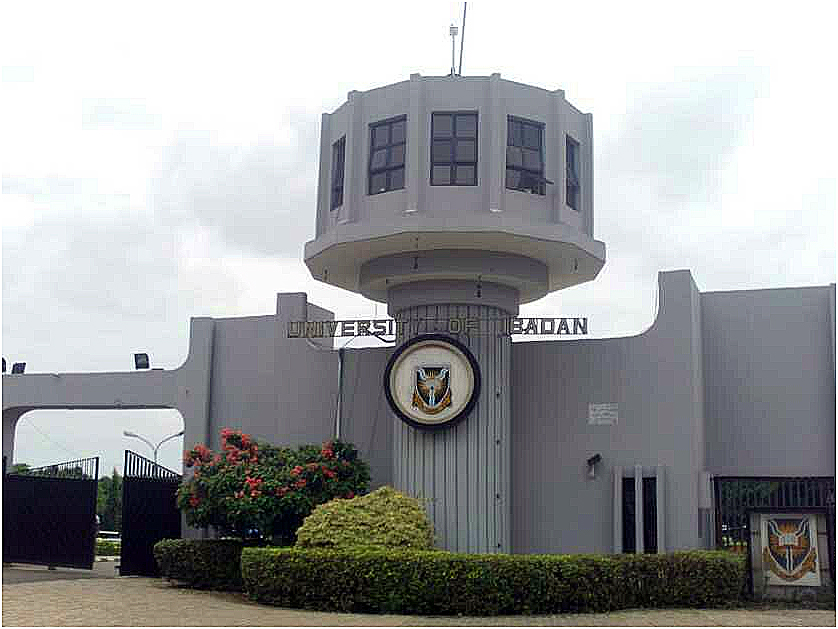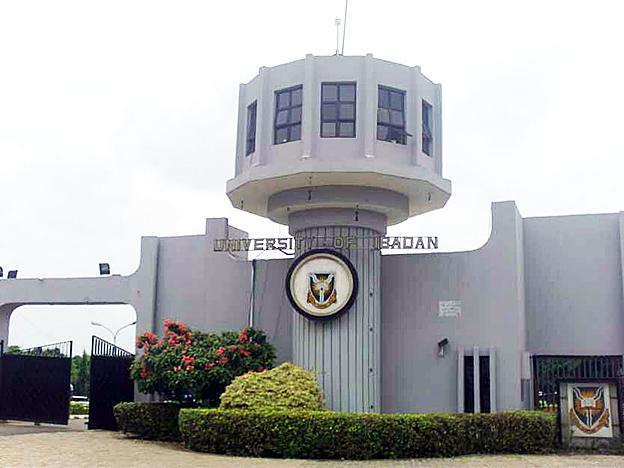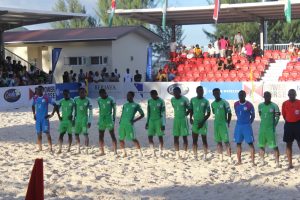
Ghana places a high value on citizen education. Education receives around a quarter of the government’s annual budget. The percentage of persons enrolled in higher education is 47 per cent, and there are 29,754 international students studying there. Communication, association and learning all take place in English.
There are eight national public universities, two private colleges, three polytechnics, and five higher education institutes. Telecommunications companies, embassies, accountancy and consulting organisations, restaurants, call centres and other businesses offer a variety of career opportunities. As a result, whether you are a citizen or a foreign student, work is available for all graduates. The top ten universities in Ghana be discussed in this publication.
Some of the top ten University in Ghana include:
1. Kwame Nkrumah University of Science and Technology
The Kwame Nkrumah University of Science and Technology (KNUST) is a Ghanaian university located in Kumasi, Ashanti. The university first opened its doors in 1951. It has been accredited by Ghana’s National Accreditation Board. It is Ghana’s largest university at the moment. KNUST accepts international students. 2022 Best Global Universities in Africa: KNUST ranked as the Best University in Ghana.
2. University of Ghana, Legon
The University of Ghana is the country’s oldest public university. It is one of thirteen national public universities in Ghana. It was initially an affiliate College of the University of London which supervised its academic programmes and conferred degrees. It was formed in 1948 in the British colony of the Gold Coast as the University College of the Gold Coast. The university was renamed the University College of Ghana after Ghana gained independence in 1957.
When it was granted full university status in 1961, it renamed itself the University of Ghana. The University of Ghana, which is located on the west side of the Accra Legon hills and northeast of the city centre, today has over 60,000 registered students and houses different schools, institutions, colleges and departments. There are so many programmes and courses offered by the University. University of Ghana Legon.
3. University of Cape Coast
The University of Cape Coast is a public collegiate university situated in Cape Coast’s historic town. The school lies on a hill overlooking the Atlantic Ocean and boasts a rare coastal location. It has two campuses: the Old Site (Southern Campus) and the New Site (Northern Campus New Site). Elmina and Cape Coast Castle, two of Ghana’s most prominent historical landmarks, are just a few kilometres from the university’s campus.
The University of Cape Coast began as a university institution in October 1962, in response to the country’s desperate need for highly trained and talented workers in the education sector.
Its original mandate was therefore to train graduate teachers for second cycle institutions, teacher training colleges and technical institutions, a mission that the two existing public universities at the time were unequipped to fulfil.
By an Act of Parliament, the institution was elevated to the status of a complete and autonomous university on October 1, 1971, with the right to award its own degrees, diplomas and certificates. The university now has the capacity to address the workforce demands of other ministries and industries in the country, in addition to the Ministry of Education, thanks to the development of some of its faculties/schools and the diversification of its programmes. Since then, the university has expanded its mission to include the training of doctors and other health-care professionals as well as business professionals, administrators, lawyers, and agriculturalists. Ministers of State, High Commissioners, CEOs and Members of Parliament are among UCC’s alumni.
4. University for Development Studies (UDS)
The University for Development Studies in Tamale was founded by the Ghanaian Government in 1992 with the goal of accelerating the development of Ghana’s three northern regions at the time (the Northern, Upper East and Upper West Regions).
The late President Jerry John Rawlings was instrumental to its formation, donating $50,000 from his coveted World Food Prize money as seed money. It was established as a multi-campus university. It is Ghana’s fifth public university to open its doors. This deviates from the traditional model of institutions with central campuses and administration.
It was designed with the three northern Ghanaian regions in mind. That is, the Northern Region, Upper East Region and Upper West Region. It consists of four campuses, eight faculties, a business school, a medical school, a graduate school, an institute and three centers.
5. Ghana Institute of Management and Public Administration
The Ghana Institute of Management and Public Administration (GIMPA) is a public co-educational university in Accra, Ghana, with six schools and ten research institutes dispersed across four campuses (Accra, Tema, Kumasi and Takoradi).The location of GIMPA, Greenhill, was named by Nicholas T. Clerk (1930 – 2012) who served as the Rector of the Institute from 1977 to 1982.
The name, “Greenhill”, is a reference to the lush greenery and hilly topography of the main campus, as well as its location in Legon which was historically on the periphery of the Ghanaian capital, Accra.
An Act of Parliament established it as a public university in 2004. The Institute was founded in 1961 by the Ghanaian Government with funding from the United Nations Special Fund Project, with the intention of serving as a specialised training graduate school for Ghanaian civil employees.
In business administration, entrepreneurship, law, public administration, development management, governance, leadership and technology, GIMPA now offers Bachelor’s, Master’s and Executive Master’s degree programmes.
6. University of Education Winneba, Central, Ghana
The University of Education, Winneba (UEW) is a Ghanaian university located in Winneba in the Central Region. It was founded in 1992 as a result of a government legislation (PNDC Law 322) and has ties to the University of Cape Coast. Its primary goal is to prepare teachers for Ghana’s educational system.
The University of Education in Winneba is in charge of teacher education and the production of professional educators in order to pioneer a new national vision of education aimed at refocusing Ghana’s efforts on rapid economic and social development.
The University of Education in Winneba is intended to play a key part in Ghana’s efforts to develop academics with knowledge that is completely responsive to the realities and demands of modern Ghana.
7. University of Mines and Technology
In 1952, UMaT was founded as the Tarkwa Technical Institute. The Tarkwa School of Mines was established in 1961 to assist in the training of people for Ghana’s mining industry. In 1976, UMaT was accepted into the Kwame Nkrumah University of Science and Technology (KNUST) faculty.
UMaT was elevated to university college status on October 1, 2001 and was renamed the Western University College of KNUST. By order of Parliament, UMaT became a full-fledged university in November 2004. (Act 677). The first group of students graduated at Tarkwa in 2008, instead of attending the ceremony at KNUST.
The university was renamed George Grant University of Mines and Technology on January 12, 2018, in honour of Paa Grant.
8. Kumasi Technical University
Technical University (KTU), originally Kumasi Polytechnic, is a public tertiary university in Ghana’s Ashanti Region. Kumasi Technical University was formerly a polytechnic in Ghana that has been converted into a university.
It is located in the centre of Kumasi, Ghana’s Ashanti Region’s capital city. Professor Nana Osei-Wusu Achiaw is the Vice-Chancellor of Kumasi Technical University. He is the university’s first vice-chancellor after it was converted into a university.
The university, known earlier as Kumasi Technical Institute, was established in 1954, but started actual academic work in 1955, with particular focus on craft courses. It became a polytechnic on October 30, 1963 and a university in 2017. From then on, it concentrated on Technical and a few Diploma Programmes. Additionally, a few professional courses were offered. Following the enactment of the Polytechnic Law 1992, PNDC Law 321, Kumasi Polytechnic ceased to exist in its previous form and became a university.
9. Ashesi University
Ashesi University is a non-profit private university in Accra, Ghana. Ashesi University’s aim is to educate ethical, entrepreneurial leaders in Africa by instilling critical thinking skills, compassion for others and the fortitude required to alter the continent in students.
The President of Ghana awarded Ashesi University a Charter in 2018, allowing it full independence as a nationally-recognised degree-awarding university. In Ghana’s history, it is the youngest university to be granted a Presidential Charter.
It is a member of the Association of Commonwealth Universities, the Council of Independent Universities, and the Association of African Universities.
10. Ho Technical University
Ho Technical University, previously known as Ho Polytechnic, is a public tertiary institution in Ghana’s Volta Region. In 1968, the Polytechnic Institute was established as a technical institute with the primary purpose of offering pre-technical education.
The Institute has made significant progress and upgraded its curricula by 1972. The college was promoted to a Polytechnic in 1986. However, it was not until 1993 that it received full legal recognition (Polytechnic Law 321) as a fully-fledged postsecondary institution, with the obligation of educating students at the Higher National Diploma (HND) and Degree levels.

















